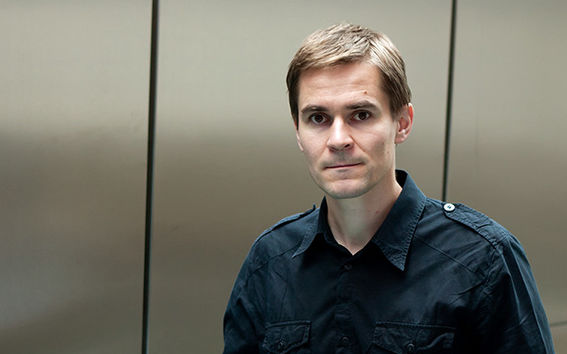Harri Lähdesmäki mines data for signs of disease

Professor Harri Lähdesmäki, what do you research and why?
My research field is computational biology and bioinformatics, which means that I use computational methods to solve problems related to biosciences as well as biomedical problems. One of the best-known examples of my field is genome research, where the focus is on discovering the hereditary hints that can tell us whether an individual is at-risk for a certain type of disease. The datasets that I work with are massive. The human genome is composed of around three billion A, C, G and T nucleotides, and one measurement can produce hundreds of millions or even billions of pieces of information for analysis.
Many of my studies focus on autoimmune diseases, such as type 1 diabetes, rheumatism and asthma. The measurement data that I use can be a static genotype in a human cell, or a dynamically-changing collection of genes and proteins that reflect the behaviour of a healthy cell, environmental effects as well as the development of the disease. When we conduct these sorts of measurements for large groups that contain both healthy and diseased individuals, computational methods can help us discover the proteins that are related to the causes of the disease. This can help with the early diagnosis of the disease and, in the future, even prevent its onset.
How did you end up as a researcher?
When I was younger, I didn't dream about becoming a researcher. I wanted to be an athlete, and I did become one, in a way. However, I became interested in natural sciences in upper secondary school, and during my studies, I was fascinated by computational science and mathematics and the problems related to them. I wanted to find new solutions and apply that knowledge. The final spark for becoming a researcher came when I was writing my doctoral dissertation on bioinformatics, a field that combines computational science, applied mathematics and practical problems from medicine and biology.
What have been the highlights of your career?
Absolutely the studies where I have been really able to utilise my own computational expertise in solving biological and biomedical problems − using my own strengths to promote the common good.
What is the most important characteristic of a researcher?
Having a keen interest is the key thing. It also helps that I've been blessed with a certain type of tenacity. My research is strongly cross-disciplinary in nature, which means that I get to work a lot with medical doctors and biologists. That’s why it is absolutely essential that I am able to collaborate with experts from different fields.
What do you expect from the future?
It would be great if I could achieve a stepping stone for human health that people could see in their daily lives. My work is strongly focused on basic research, so it will take some time before you can see its effects in the everyday practices of local health clinics. However, discovering the biomarkers that can be used to predict the risk of disease will help prevent diseases in the future.
Harri Lähdesmäki and the other recently tenured professors at Aalto University will present their research during a series of lectures that will be arranged on 15 November. We hope to see you there! For more information, see this page.
Read more news

Get to know us: Associate Professor Maria Sammalkorpi
Sammalkorpi received her doctorate from Helsinki University of Technology 2004. After her defence, she has worked as a researcher at the Universities of Princeton, Yale and Aalto.
Aalto computer scientists in ICML 2024
Computer scientists in ICML 2024
Getting bacteria into line
Physicists use magnetic fields to manipulate bacterial behaviour